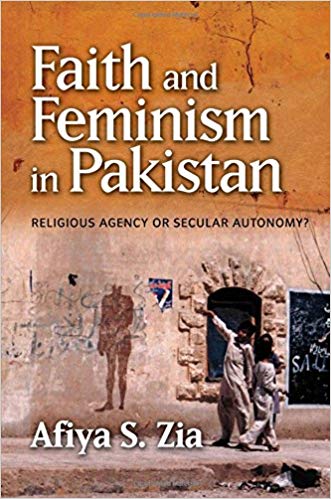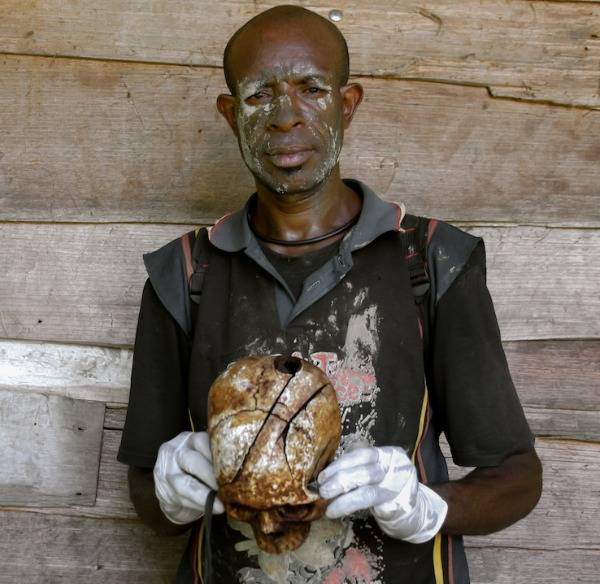
This article is a preview from the Summer 2019 edition of New Humanist
Faith and Feminism in Pakistan: Religious Agency or Secular Autonomy? (Sussex Academic Press) by Afiya S. Zia
The focus of this book is Pakistan but I was struck by the similarity of the ideological battles being fought between secular and Islamic feminists in Pakistan and in Britain. Of course, the contexts are very different. Secular spaces are much narrower and more dangerous places to inhabit in Pakistan – as anyone following the blasphemy case of Asia Bibi will recognise. This is therefore a brave book. However, Afiya Zia, the author, says that to some extent she is protected by academia and by the fact that these debates are conducted in English rather than Urdu. Equating liberalism and secularism with an English-speaking elite may sound reductive, but this is a reality that is mirrored in India too.
Zia charts the post-9/11 intellectual climate which was shaped in response to the War on Terror. It encouraged many academics and activists to develop a narrative which damns secular feminism as a Western imperialist project which does not engage with the reality of Muslim women. This narrative has eclipsed the secular feminist trends that existed in Pakistan before 9/11 as represented by the activism of the Women’s Action Forum, of which Zia is a member. The view that secularism is a corrupting Western import disregards the fact that US imperialism also supported Pakistan’s dictator Zia-ul-Haq and the mujahideen in Afghanistan, the seedbed of the Taliban.
“The idea that Islamisation in the 1980s was some evolutionary, natural social force emerging as a form of anti-imperialist resistance is a reinvention by post-secularist scholars,” writes Afiya Zia. To those who argue that women’s sexual freedoms have been instrumentalised by the West to attack Islam, Zia counters that the Islamists have used the same tool in their battle against the West.
A whole body of scholarship that aims to counter what it sees as an imperialist project to construct a stereotypical Muslim woman – submissive and lacking in agency – has evolved. The irony is that Muslim women like Zia, who use their agency to argue for the importance of secularism, are dismissed as Western stooges or not authentically Muslim. Zia shows how the valorisation of Muslim women’s religious agency by diasporic scholars like the late Saba Mahmood, as an indigenous alternative to Western secularism, actually accommodates patriarchal and conservative mores and limits room for women’s emancipation.
These debates echo much of what has been going on in the UK. Groups like Southall Black Sisters, Women Against Fundamentalism or journals like Feminist Dissent, which are critical of what Islamism means for women, are considered by some sections of the anti-racist left to lack authenticity and – by default if not design – to be complicit with Western imperialist agendas. Any critique of Islamism is seen as Islamophobia, a view that has taken hold in the academy as well as on the streets.
However, this is where the similarities end between the UK and Pakistani contexts. In the UK, the secular feminist agenda has been hijacked by the far right, whose anti-Muslim racism is wrapped up in “concern” for Muslim women subjected to honour crimes and the burkha, despite patriarchy in their own ranks. This is one reason that the liberal left is reluctant to make a secular critique of Islamism but is happy to do so against other religious fundamentalisms like Hinduism or evangelical Christianity. (I would argue that if the left had not vacated this territory, the far right would not have rushed in.) There is a similar reulctance in some quarters to criticise Israel or Zionist ideology for fear of being seen as anti-Semitic. Unlike the far right in the UK, the far right in Pakistan, as represented by the mullahs, do all they can to separate their ideological territory from that of secular feminists.
Another familiar claim in Pakistan is that secular feminists are Westernised, middle-class urban women. Zia counters that with her depiction of the work and politics of the Lady Health Workers group, who often come from financially precarious backgrounds. This is a government-run project, initiated by Benazir Bhutto in 1994, that employs over 110,000 trained female community workers to deliver basic health services. They have succeeded in increasing the use of contraception, particularly in inaccessible rural areas. The Taliban felt threatened by this, and used their radio broadcasts to describe them as “house-calling prostitutes” because they carried condoms. Their work subverted the patriarchal order insofar as they enabled women to gain control of their bodies, and through their relative freedom in moving around in public and private spaces.
While these women may be religious individuals, as Zia has written elsewhere, “their service is driven and motivated and sustained by secular means, methods, purposes and ends. These working women are challenged by religious politics and their survival depends on secular resistance.” The Lady Health Workers protested against low pay and poor working conditions by blocking major highways, courting arrests and following up their legal case at the Supreme Court.
Zia fears that “a new, radicalised religio-political feminism dominating Pakistan’s political future is highly possible”. She is scathing about a new generation of cyber-activists whose activism she sees as limited to organising events like Pakistan Fashion Week as a way to counter terrorist ideology.
The emerging trend of Islamic feminism, which is essentially an attempt to enlarge the space for women’s rights within an Islamic discourse, is a hybridised identity in which the feminist agenda has been diluted. The danger of this trend for Zia is that it has “captured the imagination of young women in a more symbolic way that sometimes offers moments of political confrontation but mostly follows a route of stealth and accommodation with patriarchy.”
In the last decade, the Pakistani government has passed a raft of pro-women legislation dealing with acid attacks, forced marriage, honour crimes, rape and pornography. While implementation of these laws remains poor, I would have liked Zia to beam her analytical insights on how they came to be enacted given the ascendancy of Islamism, the numerous ways in which it tramples on women’s rights, and the interplay of secular and religious forces.

